
- Practical Sailing Courses
- Theory Courses (Classroom)
- Ladies Sailing Courses
- Powerboat Courses
- Online Interactive Courses
- One Day Courses (Radar, Sea Survival, First Aid)
- Sailing Skills
- Social Sailing
- Course Joining Instructions
- Recommended Accommodation
- Competent Crew – Suggested Itinerary
- Day Skipper Practical – Suggested Itinerary
- Coastal Skipper Practical – Suggested Itinerary
- HPSS Policy Regarding Coronavirus (COVID-19)
- How to tie-up a yacht the HPSS way
- Secondary ports made easy
- 10 ways to keep your boat green
- Meet the Team
- Customer Service Award
- Hamble Point Charter Membership
RYA Day Skipper Practical

Student Comments
Latest news.
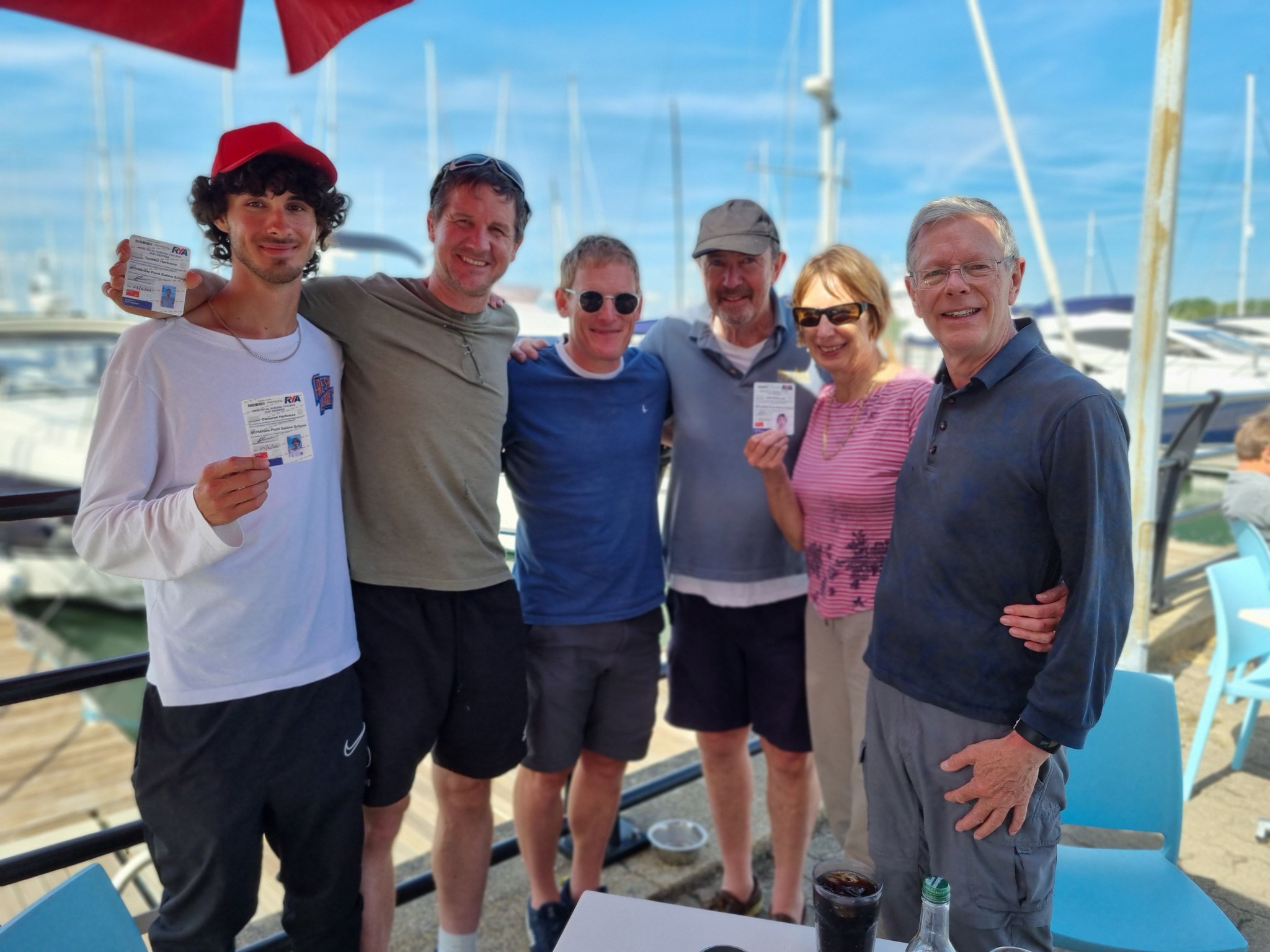
The RYA Day Skipper Practical is a course for aspiring skippers with some yachting experience and basic navigation and sailing skills.
Learn to skipper a short passage with the instructor on hand to give advice and encouragement and ensure your safety. by the end of the course you should be able to skipper a small yacht in familiar waters by day. you will experience being in charge, taking credit when it all goes well and being responsible when it doesn’t..
Course content:
Preparation for sea, deck work, navigation, pilotage, meteorology, rules of the road, maintenance and repair work, engines, victualling, emergency situations, yacht handling under power, yacht handling under sail, passage making and night cruising.
Before this course, if you are not sure that your sailing is up to speed, a good way to learn is on an rya level 2 dinghy course. this will teach you to sail around a course and control the boat’s speed., if it’s help with navigation that you need, you should take our day skipper shorebased course ..
Pre-course experience:
5 days, 100 miles, 4 night hours on board a sailing yacht Assumed knowledge: Theory to the level of the RYA Day Skipper. It is recommended you attend the RYA Day Skipper shorebased course beforehand or at least have the knowledge to this level Minimum course duration: 5 days Minimum age: 16
All of our courses allow for up to four students to be on board to ensure you receive a high level of support and tuition. Our courses also include moorings, fuel, catering including the first evening plus loan of wet weather clothing.
Course joining instructions .
For the duration of this course, your accommodation overnight will be onboard the yacht including the Skipper.
Example itinerary .
- Yacht Charters
- Testimonials
- Terms and Conditions
- Privacy Policy

- RYA Sailing Courses
- Other Courses, Offers & Events
- Course Dates & Prices
- More Information
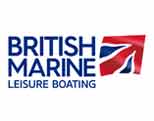
Hamble Point Sailing School
is a trading name of Hamble Point Yacht Charters Ltd Hamble Point Marina School Lane Hamble, Hampshire, SO31 4JD
Email us to get in touch
Subscribe to our newsletter below:
Your Name (required)
Your Email (required)
Your Message
Please leave this field empty.

Connect & Contact
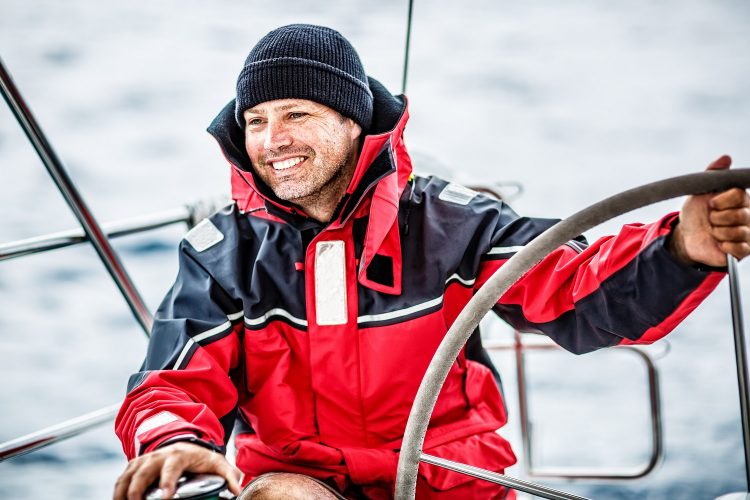
RYA Day Skipper
We offer high quality RYA day skipper courses that are tailored to fit your strengths and weaknesses. Train on immaculate sailing yachts or motor boats with experienced instructors and low student ratios.
Our RYA training centre in Hamble, on the Solent (near Portsmouth and Southampton), offers the full range of RYA courses including: RYA day skipper sail practical, RYA day skipper motor practical and the RYA shorebased day skipper theory course (online).
RYA Day Skipper Courses
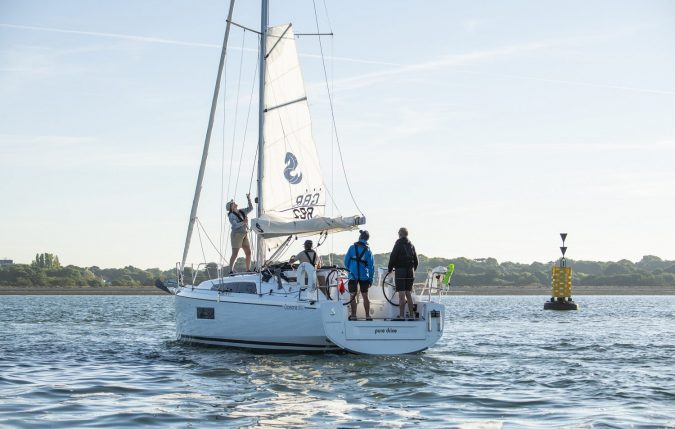
RYA Day Skipper Sail
This five day practical course is ideal for aspiring skippers who have some yachting experience and basic navigation and sailing skills.
You’ll learn to skipper a short passage with the advice and guidance of an RYA instructor.
Location : Port Hamble Marina, Hamble, Southampton
Duration : 5 days (You choose the dates – it can be split into 2 blocks)
Student ratio : Our shared courses offer a low student to instructor ratio. Private tuition offers a 1:1 student to instructor ratio or you can bring family and friends at no extra cost.
Course prerequisites & Age : 16 Years + 5 days yacht sailing experience + day skipper theory.
What’s in the RYA day skipper sail practical course syllabus?
Preparation for sea, deck work, navigation, pilotage, meteorology, rules of the road, maintenance and repair work, engines, victualing, emergency situations, yacht handling under power, yacht handling under sail, passage making, night cruising.
Pricing : Shared courses with a 2:1 instructor/student ratio cost from 100 points or £1400 per person. Contact us for private course rates.
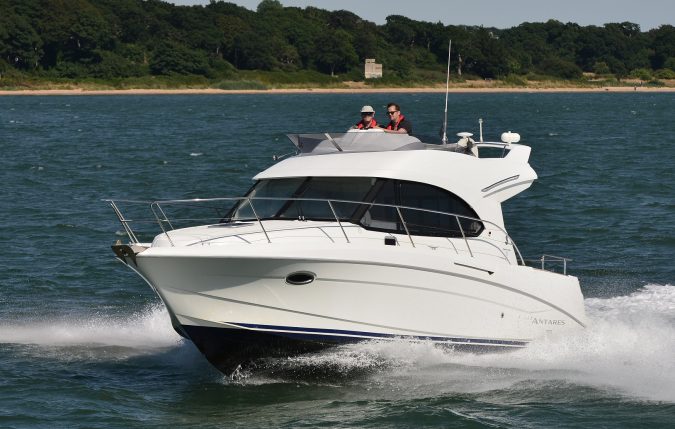
RYA Day Skipper Motor
This four day practical course is ideal for those who are new to boating, or have some basic experience of motor cruising and who now want to skipper their own motor cruiser.
This course offers practice and guidance for safely skippering a motor cruiser in local waters and berthing in marinas.
Duration : 4 days (You choose the dates – it can be split into 2 blocks)
Course prerequisites & Age : 16 Years + 2 days motor boat experience + day skipper theory.
What’s in the RYA day skipper motor practical course syllabus?
Preparation for sea, boat handling, navigation, pilotage, passage making, meteorology, rules of the road, engines, emergency situations, introduction to night cruising.
Pricing : Shared courses with a 2:1 instructor/student ratio cost from 140 points or £1960 per person. Contact us for private course rates.
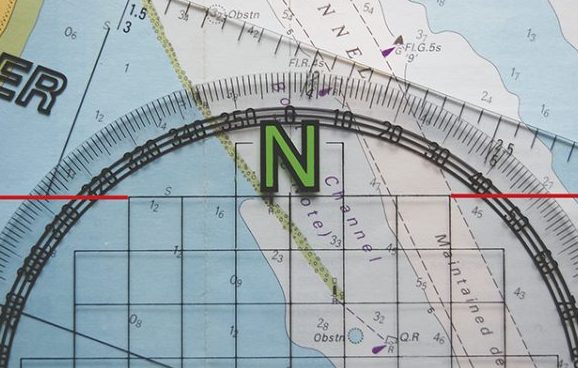
RYA Day Skipper Theory
The RYA day skipper theory course will introduce you to navigating using both a nautical chart and electronic chart plotter.
Learn about coastal navigation, position fixing, plotting a course to steer, using tide-tables and creating a pilotage plan. You’ll practice how to plan ahead for a day sail – including passage planning and meteorology.
Location : Online
Duration : Recommended 40 hours
Course Prerequisite & Age : None
What’s in the RYA day skipper theory course syllabus?
The basics of seamanship, the essentials of coastal navigation and pilotage, chartwork, electronic charts, position fixing, plotting a course to steer, weather forecasting and meteorology, tides, collision regulations construction, parts and equipment of a cruising boat, emergency and safety procedures including distress calls,use of flares, safety harnesses, lifejackets and liferafts.

RYA Day Skipper Courses on the Solent (Hamble)
Why train with pure latitude boat club.
Pure Latitude is not just a sailing school. We deliver high quality RYA day skipper courses on our immaculate fleet of club boats – with a focus on bespoke support and development through our training membership plans.
Our RYA day skipper courses are tailored to your goals. Low instructor – student ratios ensure a high quality learning experience focused on your specific strengths and weaknesses. It’s by far the most productive way to learn and you are welcome to bring family and friends at no extra cost.
Our base in Hamble offers immediate access to the Solent – the Mecca of UK sailing. Situated between Southampton and Portsmouth, we are easily accessed by road or rail. The Solent offers a wonderful selection of harbours, bays and historic boating towns. As a training location, it is beautiful and varied but also demanding, with challenging winds, complex tides and busy waterways. RYA day skipper certificates completed in the Solent are held in high regard worldwide – it’s often said if you can sail in the Solent you can sail anywhere.
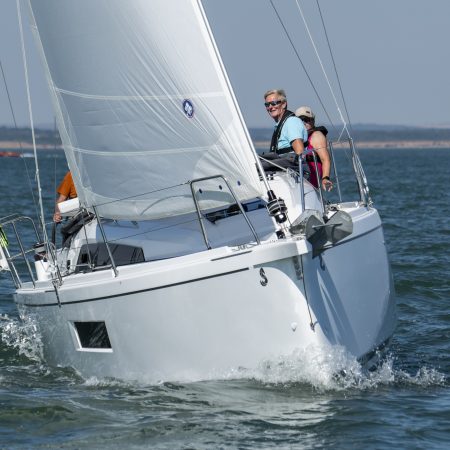
It’s not just an RYA day skipper course, it’s a journey
Why train as part of pure latitude boat club .
Learning doesn’t finish at the end of the course. The same could be said for any discipline, but when it comes to boating, experience is everything.
Skippering boats is a continuous journey, not just a destination. The formal RYA syllabus ensures you have the range of knowledge needed at each level, but it’s having a way to practice, test and develop your skills during a regular day on the water that turns knowledge into expertise.
We provide the environment for members to spend whatever time they need skippering, be that on their own, on a 1:1 basis with an instructor or in a small group setting joining one of our popular events. In all cases, they focus on the specific things that matter to them.
We developed our boat share club to make bespoke learning accessible, hassle-free and affordable, with a unique mix of sail and power boat training options.
The on-hand support and mentoring, not just for me but the whole family, has made the biggest difference to our enjoyment of sailing.
Mark, member since 2012

Sorry but you are using an outdated browser. Please click here to improve your experience × Close

- Courses RYA Practical Sailing Courses Shorebased Courses Sailing Masterclasses Online Courses Women's Sailing Courses Youth Sailing Own Boat Tuition
- Cruises Channel Islands Cruise Mid Week Cross Channel Hops Normandy Cruise West Country Cruise
- Fastrak Fastrak Day Skipper Fastrack to Yachtmaster Offshore Day Skipper Course - Shore based and Practical Fastrak to Coastal Skipper Course Bespoke Sail Training Programmes Fastrak to Yachtmaster Ocean
- Youth Sailing Teenagers - RYA Competent Crew Course Teenagers - RYA Day Skipper Course Teenagers - Day Skipper Theory and Practical Course Duke of Edinburgh's Award - DofE Sailing DofE - Team Sailing Expeditions DofE - Open Gold Sailing Expeditions DofE - Open Silver Sailing Expeditions Gap Year Sailing 2023-24 DofE - Residential Sailing Courses
- Special Offers
- Yacht e News
- Contact BOSS Bank Details - British Offshore Sailing School Subscribe Enquiry Form Sailing Experience Form Joining Details Booking Form Send us a message
Practical & Shorebased Sailing Courses
RYA Sailing Courses
Boss offers an extensive range of RYA sailing courses and RYA yachting courses from our Hamble School yachting base as well as overseas locations. Sailing courses for beginners through to expert RYA Ocean Yachtmaster are available throughout the year.
The RYA Start Yachting taster weekend offersbeginners the opportunity to get out on the water and find out what cruising is all about. The RYA Competent Crew sailing courses take you to a level where you can be an effective crew member aboard a cruising yacht. For the more advanced RYA Day Skipper, Coastal Skipper and Yachtmaster sailing courses enable those with the appropriate experience a training option that leads to skippering exams and qualifications.
For qualified skippers, a number of specialist Master Class sailing courses are also available to develop your personal skills. The BOSS Boat Handling course is all about skilfully manoeuvring a yacht under power, Sailpower teaches the cruising yachtsman the finer points of rig tune and sail trim and our specially developed BOSS Skippers Master Class is for those who wish to develop their skippering techniques to a higher level. We also specialise in Ladies only sailing courses. Tuition by women for women. Choose a course below to view more details, or contact us directly to enquire which is best for you. Many more courses available via the menus on this page.
Quick Links
Rya practical sailing courses, rya classroom based navigation, online courses, rya-mca yachtmaster courses, fastrak courses, rya one day classroom courses, sailing masterclasses, stcw courses, women's sailing courses, youth sailing, duke of edinburgh's award - dofe sailing, practical courses.
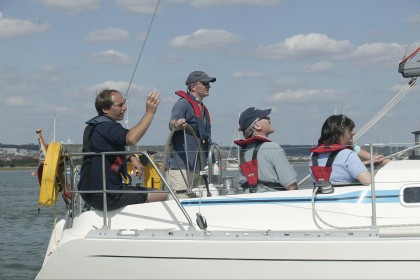
BOSS Sailing Schools offer a full range of practical sailing courses.From beginners weekends through to specialist Ocean Yachtmaster training. Call us now on +44 (0) 2380457733 to discuss your sailing
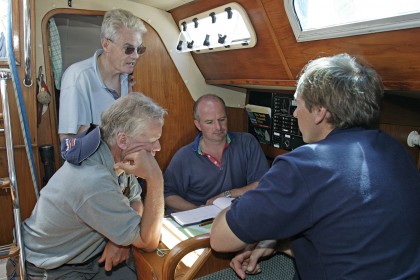
Intensive Training modules from 14 days - Fastrak to Day Skipper, through 6 week Yachtmaster Coastal and 8 week Yachtmaster Offshore to the full classic 18 week beginner to Offshore as well as Ocean
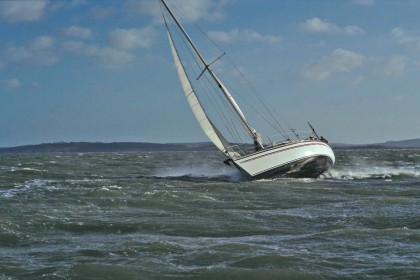
Sailpower Boat Handling Skippering Skills weekends
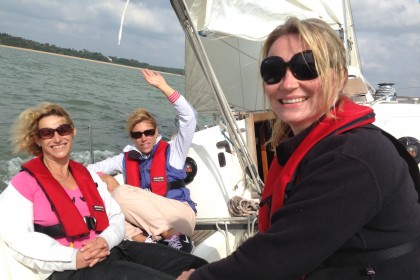
Specially designed sailing courses for teenagers
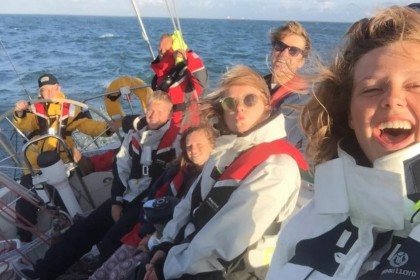
DofE Silver and Gold Sailing Expeditions for individuals and groups. Sailing courses and cruises for your Gold Residential section.
Shorebased Courses
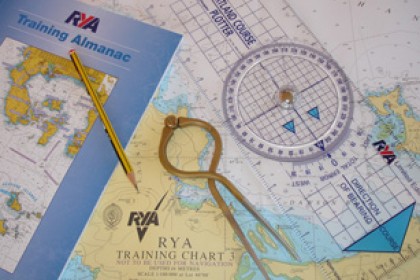
RYA Day Skipper - Coastal Skipper and Yachtmaster - RYA Yachtmaster Ocean
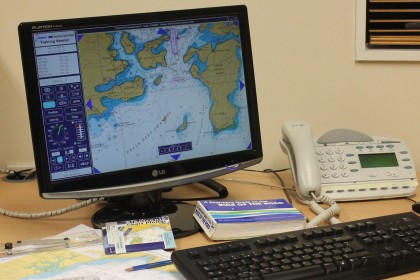
VHF - CEVNI - PPR - Essential Navigation - Day Skipper - Coastal Skipper - Yachtmaster Ocean. At BOSS we offer a full range of Online and Distance Learning Programmes
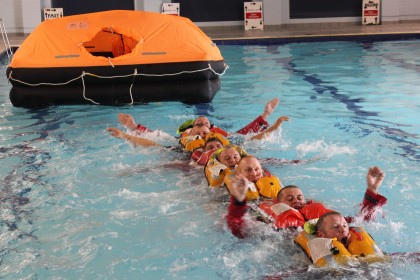
VHF Course - First Aid - Sea Survival - ISAF Safety - Radar Course - Diesel Engine
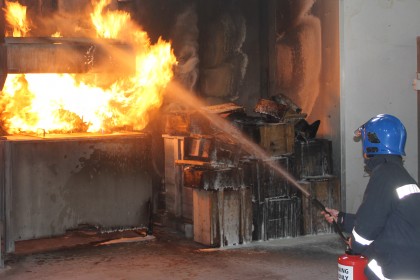
Can't find the course you're looking for?
Fill out our sailing experience form and we'll find the right course for you.
Cookies help us deliver you the best experience possible. By using our website, you agree to our use of cookies. Learn more Close
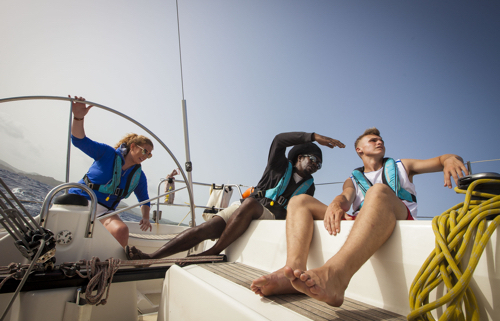
RYA Day Skipper Sail
Rya day skipper course.
The RYA Day Skipper Practical is an introduction to taking charge onboard a yacht, allowing you to put your basic navigation, pilotage, and sailing skills into practice. It will provide you with an opportunity to take command, and to develop your leadership skills onboard, under the guidance of an experienced and friendly instructor. It is a very useful and popular Captains license for those looking to charter a yacht.
It includes 4 nights on board and food for Day 1. After that students are encouraged to take part in the provisioning and planning for the week.
Upon successful completion of the RYA Day Skipper Practical Course, you will be able to navigate and skipper a small yacht in familiar waters by day. This qualification is usually accepted when chartering a yacht as skipper anywhere in the world. Holders of the RYA Day Skipper Practical qualification can apply to the RYA for and receive an International Certificate of Competence (ICC) for a small charge.
In many places it is also a legal requirement to complete the VHF/SRC Radio course as well. You can do this online with us before arriving and sit the assessment before or after your course.
You are strongly advised to be comfortable with Day Skipper Theor y before attending this course and we often run the theory course just before the practical or you can do this online before coming. In addition we find that even Day Skipper candidates can benefit from some dinghy sailing to improve wind awareness, and dinghies can be rented with or without an instructor at the National Sailing Academy .
Please click here to see the progression of RYA Sailing Practical Courses and the recommended path for both theory and practical courses.
This course can also be done on your own vessel.
It is also a good course for friends and families to sail together privately, either all doing Day Skipper or with Competent Crew candidates.
The cost is US $1195 - please click the ' Training Dates & Booking ' button to the right, to check available dates.
| Theory or similar | |||
| . Caribbean |

This site uses cookies. By continuing to browse the site, you are agreeing to our use of cookies.
Cookie and Privacy Settings
We may request cookies to be set on your device. We use cookies to let us know when you visit our websites, how you interact with us, to enrich your user experience, and to customize your relationship with our website.
Click on the different category headings to find out more. You can also change some of your preferences. Note that blocking some types of cookies may impact your experience on our websites and the services we are able to offer.
These cookies are strictly necessary to provide you with services available through our website and to use some of its features.
Because these cookies are strictly necessary to deliver the website, refuseing them will have impact how our site functions. You always can block or delete cookies by changing your browser settings and force blocking all cookies on this website. But this will always prompt you to accept/refuse cookies when revisiting our site.
We fully respect if you want to refuse cookies but to avoid asking you again and again kindly allow us to store a cookie for that. You are free to opt out any time or opt in for other cookies to get a better experience. If you refuse cookies we will remove all set cookies in our domain.
We provide you with a list of stored cookies on your computer in our domain so you can check what we stored. Due to security reasons we are not able to show or modify cookies from other domains. You can check these in your browser security settings.
We also use different external services like Google Webfonts, Google Maps, and external Video providers. Since these providers may collect personal data like your IP address we allow you to block them here. Please be aware that this might heavily reduce the functionality and appearance of our site. Changes will take effect once you reload the page.
Google Webfont Settings:
Google Map Settings:
Google reCaptcha Settings:
Vimeo and Youtube video embeds:
You can read about our cookies and privacy settings in detail on our Privacy Policy Page.
Yachting Monthly
- Digital edition

How to pass your Yachtmaster Practical Exam
- Theo Stocker
- August 22, 2024
Theo Stocker is put through his paces on an RYA Yachtmaster Offshore prep week, before taking the exam itself. Find out how he got on

The RYA Yachtmaster Offshore has long been the qualification that cruising yacht sailors, both amateur and professional, have aspired to. Quite aside from the fact that it is the gateway to working in the yachting industry if the desire so takes you, it is good to know that you have mastered the sweep of skills and experience necessary for you to be deemed competent at skippering a sailing yacht.
I’ve wanted to test myself and see if I was up to scratch for years, and I finally got the courage up to put my skills under the spotlight earlier this summer. I was going to be taking the test with my friend Andrew, as we’d been talking about doing our Yachtmaster for two decades.
Last month I shared my experience of preparing for a Yachtmaster exam to get our rusty skills and knowledge back up to standard, and to check that there weren’t any major holes in our repertoire. Now that the RYA Yachtmaster scheme has turned 50, we were also interested to see how things have changed with technology.
Things like chartplotters and mobile internet have made some areas massively easier, but bring their own challenges, and in the first part, we discovered that navigating these systems and knowing what information to trust requires just as many skills and as much judgement as the old methods.
If anything, they also bring more opportunity for distraction from the real world with plenty of potential for making navigationally serious mistakes. The standard for passing the RYA Yachtmaster Offshore exam is just as demanding as it ever was.
Having looked at safety briefs, marina boat handling, navigation and pilotage, it was now time to move onto boat handling under sail, the more critical safety manoeuvres, as well as some of the softer skills involved in skippering a crew. The exam was looming…

The Yachtmaster crew (L-R): Matt Sillars, Andrew Eastham, Row Staples, Theo Stocker
Skippering the boat
Part of the reason for having our supercrew, Row, on board for the prep week was that it’s all well and good sailing solo, but a skipper needs to be able to lead and manage a crew safely, and ideally create an atmosphere on board that is harmonious, effective and enjoyable, striking the right balance between being clearly in control, facilitating everyone to play their part, and enjoying life at sea.
A huge part of this is around good, early communication in the inevitable form of briefings. Now, this isn’t patronisingly sitting everyone down and telling them to do things they are totally capable of doing, but of communicating what you want to happen, before it happens.
Briefings can be brief and on-the-go, as long as they are clear and you are confident your crew understand. It also demands some degree of foresight and competence on your part – if you haven’t anticipated something, you can’t brief for it. Whether it’s leaving a berth, setting sail or fighting a fire, everyone having a job and being equipped with the skills to do their jobs should engender a satisfying sense of competence and achievement for everyone involved.
Article continues below…

How to prepare for your Yachtmaster Offshore exam
Many very competent and highly experienced yachtsmen and women don’t have any qualifications at all and are content to keep…
Andrew and I were struck by how much we’re both used to just getting on and doing stuff on our own boats, either by ourselves, or without making sure the crew know what we’re thinking. Talking out loud was a helpful habit during the week. In marina manoeuvres, we tried to warn crew on the foredeck that we were about to turn, or go astern, so as not to unbalance them, and our coming alongsides were a lot smoother when everyone knew what order to get the lines across in.

Make sure there’s cake and coffee – especially during your exam

Soft skills
Whether you’re sailing with strangers you’ve never met before, or with your family who know your flaws only too well and are occasionally good enough to point these out to you, managing interpersonal relationships on board is a skill that’s hard to teach but critical to a safe and happy crew. The more competent and in control you feel, the easier this will be, and thinking ahead will help you keep your stress levels down.
Under the eye of an instructor or examiner, we were of course on our best behaviour. It helped that all of us genuinely enjoyed our time on board and each other’s company, but thinking through what your crew may be feeling or thinking will help. Swallow your pride and do some of the jobs others might not enjoy.
As long as the boat is under control and you’ve got some capacity, make everyone a cup of tea and offer the choccy round. Give people things to do, but let them rest when they need a break too. Make sure they’ve all got suncream on. Keeping an eye on their wellbeing isn’t always easy when you’re nervous, stressed, or don’t quite know where you are.

Briefings can be informal, as long as your crew is clear about what’s happening and what to do
Command and safety
At the same time, you are responsible for keeping the boat safe. There will be times when you need to make it clear who is in charge, and what you are and are not happy with on board. Andrew and I are used to scampering around a boat, but reminding each other to clip on before going forward for a man overboard, or finding a safe way to adjust the mainsail leech line was a useful reminder to err on the side of caution. Demonstrate that you can pre-empt risks and avoid or mitigate for them.
Boat husbandry and housekeeping
Serious problems on board are more likely if you don’t keep on top of the little things. We worked hard to make sure the boat was in a good state during the week; tidy the galley up and stow the crockery before you set sail, coil the halyards and lines away once you’ve finished reefing. A snake’s wedding in the cockpit is going to lead to jammed lines and tangled feet. If you’re happy with the picture of where the boat is and how she’s sailing, look around you to make sure the details are right too.

Shout man overboard and point at the casualty. Crash tack to stop the boat
Man overboard
Man overboard is just about one of the most serious events that can happen on board a cruising yacht at sea. Getting them out of the water as quickly as possible is of paramount importance. When I last did a sailing course nearly two decades ago, the drills were the same as they’ve always been – choose whether you want to get back to the MOB under sail or engine, do your manoeuvre, then fish out the fender and bucket with a boathook.
I’ve spent some time for the magazine testing not only the sequence of actions in this manouevre but how you then actually get the casualty out of the water, and was chastened by just how hard it really is to lift a dead-weight casualty from the water onto deck, especially if they are incapacitated.
I was encouraged, therefore, that the RYA’s approach to MOB training has moved on, breaking it down into three areas: preventing man overboard in the first place, getting back to the casualty, and getting them out of the water.
The usual points of minimising time on deck, clipping on in rough weather or when alone on deck, only going forward on the windward side, and all the other precautions, are something to drill into your crew, and as skipper, it’s important to ensure a safe culture on board.

You can still practise with a fender, but getting back to it is only half the job
Man overboards are no longer taught exclusively under sail. Yes, we practised sailing back to a fender in the water, but this should only ever be as a backup to the fastest and most reliable way to get to your MOB, and on boats with engines, that is under power.
The order in which we did the drill during our training was as follows:
- Raise the alarm – Shout man overboard and point at the casualty.
- Stop the boat – Stop the boat by crash-tacking to heave to, and ensure crew don’t release the sheets. At this point you are close to the MOB and under control.
- Mark the mob – Throw in the horseshoe and danbuoy, then allocate someone to point at the MOB. At this stage you should also be able to communicate with them.
- Make a distress call – Someone can then go below to hit the VHF DSC distress button and to mark the MOB on the plotter, but don’t bother with a voice Mayday call at this point – it’s too slow unless you have a large crew.
- Start the engine – Check the lines are clear, start the engine, furl the jib and centre the main.
- Prepare for recovery – As you motor round, the crew can get the MOB recovery kit ready – a grab bag in the cockpit locker contained a 6:1 handy billy with a sling already attached.
- Rig the handy billy – The handy billy is hoisted on a spinnaker halyard, and guyed forwards to stop it swinging – we used the spinnaker pole downhaul, but a clip to the shroud might also work. The tail can be taken to a primary winch via a turning block if extra power is needed. Before crew go forward, they should clip on to prevent a second MOB, so have tethers in the bag too.
- Depower the main – Once downwind of the MOB, come onto a close reach and the main can be eased out with the deck crew forward of the shroud, and if a topping lift is fitted, scandalise the boom to keep it clear of heads. If you’ve got lazy jacks, you could drop the main, but don’t drop the main onto deck where everyone will be working.
- Approach and attach – As you come to the MOB, aim upwind and drift down. A loop of rope can be thrown over the casualty, which will be easier than trying to catch them with a flimsy boathook.
- Hoist them aboard – Get them to put the sling on if they can, or use the loop of rope secured to the handy billy to hoist them. A floating loop of line pre-attached to their lifejacket, like the MOB Lifesaver, would also speed things up here. If they’ve not been in the water long, and you’re only doing a short lift, focus on getting them out of the water rather than keeping them horizontal.

Stop the boat by crash-tacking to heave to without easing the sheets. You should then be stopped, under control and close to the MOB
Practise alongside
It’s a highly informative process to try out this last part whilst alongside in the marina, with the ‘casualty’ a real person lying on the pontoon. While they would be wet, heavier and needing lifting further in real life, this is a very safe and controlled way of practising with your system and adjusting it until everyone is happy they know what to do.
Having done this exercise now, I am keen to do a full man overboard drill at the start of every season and at the start of every trip so that everyone on board knows what to do – it is this practice that is the deciding factor in whether you can get an MOB back or not.

Once you’re used to lassoing, it’s almost easier than using a boat hook
Manoeuvres under sail – picking up a fender
Sailing back to a fender is a good skill to have, were your engine to fail during a MOB – a line wrapping around the prop, for example – or just to get back to a favourite hat or fender that’s gone overboard. It’s like sailing onto a mooring, but easier in many ways without having to factor in the tide.
The basic principle is that you want to approach on a close reach with enough space to slow down and arrive under control, able to spill all the power from the main. There are two slight variations in that you can bear away on a broad reach to start with as you sail away from the fender, or you can reach away, then dip downwind after the tack. If you do the latter, the dip down will need to be a significant bear away.
As you’ll be sending crew forward to the shrouds, you’ll still need to furl the jib and scandalise the main on your final approach. I managed to get myself confused once or twice and went to put the fender on the windward bow like a mooring, which isn’t going to work.

Picking up a mooring under sail is a satisfying skill to master. Put the buoy on your windward bow so it doesn’t drag you into a gybe
Mooring under sail
There are a few manoeuvres that everyone should be able to do. While you may rarely sail onto a mooring buoy, knowing how to do so is a good skill to have should you have engine trouble or just for showing off. At the same time, it’s a good indicator of a sailor’s feel for the boat and how it will respond to the elements.
When approaching into wind and tide together, our Jeanneau Sun Odyssey 37 from 2008 had a fairly shallow forefoot, so as soon as our speed dropped off, the bow tended to pay off quickly.
You don’t want a flogging genoa over the crew on the foredeck either, so furling the genoa away is a good option, but you will sail slower and with more leeway, so need to be slightly higher upwind than you first anticipate.
With wind and tide opposed, you would clearly approach under genoa alone, but with wind and tide at roughly right angles, you’ll need to judge which approach is needed. There were two factors that caught us out a couple of times, interestingly more important in lighter airs.
The first is that as the boat slows down the tide becomes proportionally more important, and secondly, at the same time apparent wind will decrease and move aft, further filling the mainsail. The lesson was to prepare for a wind-against-tide approach much more readily than we might otherwise have done.

You may find yourself having to sail back into harbour with engine problems.
Sailing onto a pontoon
You are unlikely ever to sail into a marina finger berth and I wouldn’t advise trying. You may, however, find yourself having to sail back into harbour with engine problems. While a Pan Pan call is pretty ubiquitous these days, a Yachtmaster should be able to deal with engine problems at sea, and if not, to sail themselves back into harbour rather than depending on being rescued.
Most harbours will have a pontoon or berth with a relatively open approach, and it’s reasonable to expect to be able to sail onto it. The calculation of which approach to use is much the same as for picking up moorings under sail, though with other boats around and a solid pontoon to hit, the consequences of getting it wrong are higher. Handling a boat in confined waters means you’ll need to keep control at low speeds, and be thinking ahead about escape routes if it’s not going according to plan.
For us, sailing on the mid-river pontoon opposite Warsash at the bottom of the Hamble river offered a good open approach, and just enough wind to get away with a wind-and-tide together approach, though a genoa-only approach may have been safer.

A properly guyed pole is a more seaworthy setup than just clipping the pole onto the sheet
Sailing downwind
The dangers of a crash gybe are well known, particularly from the mainsheet and boom scything across the boat, with a high potential to damage both crew and boat. I had sailed a bit close to a gybe with the jib collapsing earlier in the week, and when I had intentionally gybed, I hadn’t fully centred the main.
Although no harm was done, the boom did clatter across noisily. Matt gave a stern warning about the dim view an examiner would take of this – a potential instant fail – and we agreed that looking at rigging for downwind legs would be worthwhile, including both preventer and poling out the genoa.
Rigging a preventer
Rigging a preventer is relatively straightforward. We chose the longest, strongest line we had on board in the form of a spinnaker sheet. This was led from the end of the boom, where it was secured with a round turn and two half hitches – both a strong knot and easily released under load – then forward outside everything to the bow fairlead, and then aft to a cockpit winch.

It takes a little bit of rigging, but if the result is a much safer and more manoeuvrable setup, then it’s worth doing, even on relatively short legs
When poling out a headsail in the past, I’ve always set the pole using the pole uphaul and downhaul then clipped the sheet into the end then unfurled the headsail. This works fine in settled conditions for short legs clear of shipping. Were you to need to gybe, change course, or furl away the headsail quickly, however, it would leave you with the dangerous proposition of a loose, heavy pole potentially swinging freely on the foredeck that also prevents you sheeting the sail in for an upwind course without first unclipping it from the pole.
Coming up with a solution
Matt set us the task of rigging the pole in such a way that it could be locked in position whether the sail was set or not, and that the headsail could be sheeted in for upwind sailing without going forward to unrig the pole. After a bit of head scratching, we found a solution.
The pole could be held in position by the pole uphaul, the downhaul, which served to pull the pole forwards and down, and an additional aft guy, which was an extra line taken from the pole end to the aft mooring cleat. We attached a third sheet, in the form of a spinnaker sheet, to the jib’s clew, through the pole, and aft to a spinnaker block at the stern and then onto a primary winch.
The result was that chafe was minimised, the pole could be locked in position whether the sail was set or not, and if we did need to gybe or sail upwind, the normal jib sheets still had a proper lead, albeit the pole would need to be held aft and the headsail with a couple of reefs to keep it clear of the pole.

With examiner Andy Wright aboard, the exam was finally underway
The day of the exam
The exam starts a day or two before the examiner turns up, in that he or she may want to see a passage plan you’ve prepared in advance. If this is the case, the examiner will have passed the information to you via the school providing the training.
It’s best to do this two or three days before the exam so you haven’t got a last-minute panic, but not too far in advance that you’ve forgotten the sums you’ve done and why you made the choices you did. I was set a passage from Bembridge to St Vaast on the Cherbourg peninsula, giving me a potentially fiddly drying harbour at either end, though the forecast given was a conveniently favourable Westerly Force 4-5. With passage plan complete, and some last-minute swotting up on lights, shapes and sounds, Andrew and I retired for an early night.
After the windless drizzle of the day before, Friday dawned bright and breezy with a forecast of a good Force 5 from the southwest and plenty of sunshine – enough that we’d have to be on our toes, but at least something we could get our teeth into. Matt had reassured us that making mistakes wasn’t the end of the world during the exam, if we showed competence in getting ourselves back on track.

Andrew gives the crew an on-deck safety briefing, including the MOB recovery kit
Minor mistakes are to be expected and it’s more important how you respond to your own mistake. The only sorts of things that would probably be an outright fail, other than flunking our lights and shapes, are safety critical things such as a collision, running aground, an inability to navigate and pilot, or an uncontrolled gybe.
We were joined at 0900 by our examiner Andy Wright, an RYA Yachtmaster instructor trainer, examiner and centre inspector, an MCA Master 200 who works as an RNLI area lifesaving manager and who also volunteers with the Rona sailing project. There’d be no ‘getting away with it’ here.
We began the day with a coffee and chat, and Andy spent some time asking about our reasons for taking the exam, before laying out what he would be looking for. ‘I’m not going to be trying to catch anyone out, but what I want to see you demonstrate is that you can skipper the boat, navigate the boat, handle the boat under power and handle the boat under sail.’

Andrew talks examiner Andy through his pre-prepared passage plan
The safety briefings
We began, as we had with our prep week, with safety briefs, with Andy and I splitting above and below decks.
With the engine bay open, Andy took time to probe our knowledge of engine troubleshooting, asking us to point out various parts of the engine, the different significance of blue, black or white smoke from the exhaust (incomplete combustion, burning oil and overheating, by the way), and how to change filters, impellers and belts and how to bleed the fuel.
On deck, we were asked to explain when and why each kind of flare would be used. None of it felt overly pressured, but it was certainly an in-depth examination of our knowledge.
During the day, these conversations continued as he drew information out of us in areas that were not being practically demonstrated on the day – 15-20 minutes on lights, shapes, sounds and collision avoidance, including how we’d handle different scenarios in traffic separation schemes.

Andrew points out where the MOB handy billy and sling is during his safety brief
He asked us to talk through our passage plans, and then went further to see whether we knew if the boat we were on was legally allowed to do so, and what the administrative and immigration requirements would be on either side of the Channel – a tricky one given the ongoing chaos and confusion that surrounds small boat crossings these days.
Being tested underway
In between these chats, we got underway. First with our marina manoeuvres in and out of a selection of increasingly tricky berths, putting the boat into positions that we might not have chosen, including a berth two space into a gulley with a yacht moored either side of the space and a boat opposite. Ferry gliding in bows-first wasn’t too tricky, but with wind and tide pushing us on, getting out again was harder. I opted to use prop walk to pull the stern out against a bow line – slightly unconventional, and it needed a bit of oomph to keep our bows clear, but I got away without a collision.
We then had half an hour or so to each prepare a short passage plan and pilotage from each end, this time from Hamble to Portsmouth and back. As these weren’t Andrew’s home waters, he was relieved that I was going first.

Navigating the boat, piloting into Portsmouth, and recovering a MOB kept Theo on his toes
I know Portsmouth well, but hadn’t been in for a while. With a plan complete, Andy asked me to explain the route I’d chosen. While I had the route in the chartplotter, I’d picked waypoints near easy-to-find buoys so I could see I was in the right place from the cockpit, and I’d elected not to cut the corner over the shallows off Hill Head to keep us clear of a lee shore.
I’d also have to use the Outer Swashway on the way in, as we’d be close to low water and lacking depth by about 0.3m to get in via the Inner Swashway.
Emergency on passage
Underway, and with Row on the wheel, I had decisions to make about how many reefs to put in, and I was torn between sailing the boat properly and being overly cautious. Starting with one reef, with the breeze creeping upwards, life was comfier with two reefs in. I had to stop myself from any gung-ho attempts to tighten leech lines, electing for a quick heave-to to sort them out. Coffees needed to keep on flowing during the passage, and lunchtime was upon us before I knew it.

We needed to devise a rock-solid passage plan
While the pasties were heating in the oven, there was time for a fix on the chart, or would have been had the fender not fallen overboard. We went through our drill and I was relieved to get back to the MOB first go. Andrew and Row looked at me to see if we were doing ‘the whole thing’ and as Andy hadn’t flinched, we rigged the handy billy, attached the fender to the sling and hauled away until it was safely aboard – it’s a complex process that really does need practice, but it had gone well.
A sense of relief
Once safely in Portsmouth Harbour, it was my turn to find and pick up a mooring buoy under sail. Tied up and handing over skippering duty to Andrew for his turn in the hot seat, I suddenly felt a wave of relief that my passage, pilotage and handling seemed to have gone okay. It was only early afternoon, however, and we wouldn’t be finished until we’d done our night navigation.

There was a fresh breeze from the southwest for the passage to Portsmouth
Andrew’s passage went well, too, in a building breeze that was more on the nose on the way back, while I was below wrestling with getting a tray of meatballs and sauce into a wildly swinging oven. I’m ashamed to say that when it was Andrew’s turn at MOB, despite a flawless approach, I messed up the lasso and missed the fender. Sorry, friend.
Night navigation
By the time we were back on a mooring inside Calshot Spit it was time for dinner and a brief respite, before plunging on into our night nav exercises.
Much like earlier in the week, we were asked to navigate to unmarked locations and Andy gave us a bit of time to prepare these. While we were doing this, he also checked our knowledge of how the radar worked for collision avoidance and for navigation, and how to extract relevant information from both the chartplotter and the AIS.
My night nav began well, using multiple sources of position information as requested, and just about making sense of my hastily drawn sketch and notes, looking for the characteristics of particular lights (you’ll need to know how quick VQ compared to just Q really is) and using the radar to plot our course.

Andrew plots a visual fix as the sun starts to set
As it was top of the tide, however, every ship in Southampton seemed determined to set sail, including the maiden voyage of the Queen Mary cruise liner with attendant tugs, police launches and party boats following behind. Cowering at the side of the channel, my plan was thrown into disarray and I lost the plot on radar, and we were blinded by disco balls and oil terminal lights alike. Luckily, Navionics is by no means banned, and a quick range and bearing in the palm of my hand gave me a course and distance to my imaginary point. Another step closer.
Still, Andrew needed to pilot us up the Hamble River, where Hamble Point’s sector lights can be easily lost in the welter of shore lights, and I was asked to bring the boat alongside, stern first at the end of a long gulley, giving me another chance to mess things up, right up to the last minute.

Back at Calshot darkness falls ahead of the night navigation exercises
But with the boat tied up and put to bed, Andy took each of us off for a quick chat on the pontoon. Fortunately, he was pleased with how we had done and broke the news that we had both passed. Phew – mission accomplished!
We could finally open those beers and enjoy what we had just achieved. Both of us had found the week intense, all-absorbing and demanding – perhaps unsurprisingly. As a result, we felt that we’d been forced to up our game when it came to our sailing and skippering, and our skills had been updated by a decade or two.
We were now much better-rounded skippers than we’d been before. There were lots of learnings and some new skills to take back to our own boats, too, but we had also had a fun week along the way.
Enjoyed reading this?
A subscription to Yachting Monthly magazine costs around 40% less than the cover price, so you can save money compared to buying single issues .
Print and digital editions are available through Magazines Direct – where you can also find the latest deals .
YM is packed with information to help you get the most from your time on the water.
- Take your seamanship to the next level with tips, advice and skills from our experts
- Impartial in-depth reviews of the latest yachts and equipment
- Cruising guides to help you reach those dream destinations
Follow us on Facebook , Twitter and Instagram.
- Orenburg Oblast Tourism
- Orenburg Oblast Hotels
- Orenburg Oblast Bed and Breakfast
- Flights to Orenburg Oblast
- Orenburg Oblast Restaurants
- Things to Do in Orenburg Oblast
- Orenburg Oblast Travel Forum
- Orenburg Oblast Photos
- Orenburg Oblast Map
- All Orenburg Oblast Hotels
- Orenburg Oblast Hotel Deals
Getting to Orenburg - Orenburg Oblast Forum
- Europe
- Russia
- Volga District
- Orenburg Oblast
Getting to Orenburg
- United States Forums
- Europe Forums
- Canada Forums
- Asia Forums
- Central America Forums
- Africa Forums
- Caribbean Forums
- Mexico Forums
- South Pacific Forums
- South America Forums
- Middle East Forums
- Honeymoons and Romance
- Business Travel
- Train Travel
- Traveling With Disabilities
- Tripadvisor Support
- Solo Travel
- Bargain Travel
- Timeshares / Vacation Rentals
- Volga District forums
- Orenburg Oblast forum

Getting to Orenburg is easier now than the first few times I went in the mid-1990's after the fall of Communism.
If you want to fly, you have the following options:
Aeroflot: Flying from Moscow Sheremetyevo (SVO) twice a day, this is the Russian national airline , and their website is here: http://www.aeroflot.ru/cms/en
The flight time is approximately 2 hours: there's a 2 hour time difference between Moscow and Orenburg to remember. Orenburg's airport code is REN, but you may see ONG on your luggage label - I'm not sure why.
You can order tickets for both airlines via their websites using your credit or debit card.
OrenAir also run services in the spring and summer (usually starting from May) to Germany, currently Dusseldorf from Orenburg, but there's more information on this on their website.
If you've booked to fly into Moscow SVO and want to fly to Orenburg from DME, you can use the AeroExpress services and the Metro:
SVO to Moscow: AeroExpress to Belorussky station (Belorusskaya on the Metro)
DME to Moscow: AeroExpress to Paveletsky station (Paveletskaya on the Metro)
You can use the Metro to get from one AeroExpress station to the other, and the information is also available from the airport sites - Domodedovo is http://www.domodedovo.ru/en/ and Sheremetyevo is http://www.svo.aero/en/.
Another option is the train from Moscow Kazansky station - this takes approximately 26-27 hours on an overnight sleeper train. The best place for information is the Russian Railways (RZD) website - http://pass.rzd.ru/main-pass/public/en - and you can buy your tickets here. If you choose the electronic ticket option (which also includes electronic passenger registration), you'll need to have some money on you as that ticket type doesn't include the linen fee if you're in a sleeper berth. Try and have smaller notes with you as the conductor may not have change until later in the journey.
Russia doesn't have a national bus/coach network like Eurolines, National Express, Megabus or Greyhound as far as I know, so that type of surface transport isn't available.
I've been to Orenburg city a few times using planes and trains.
Hope this helps!
- Nightlife Jun 09, 2017
- Getting to Orenburg Jul 26, 2014
- orenburg Jan 19, 2010
- GreenLeaders
Wind and weather webcams Sharlyk
Webcams at and around sharlyk, webcams by distance, webcams on map, nearby spots (within 25 km).
- Sharlyk 2km
Look at our wind map to find more spots among our 160,000 spots.
Sharlyk popularity
Most popular spots in russia.
Have a look at the top kitesurfing, windsurfing, sailing, surfing or fishing spots in Russia
Additional information
Whether you are planning your trip for today or you just want to explore, Windfinder has webcams for spots and locations in Russia and all over the world. Quickly check swell, wind and cloud coverage by examining webcam feeds from around your destination. Webcams at Sharlyk are discoverable on a map for further exploration or a convenient list view sorted by distance up to 25 kilometers from this spot.
Severe Weather Warnings

- Fleet & Prices
- Jeanneau 37
- Jeanneau Sun Fast 37
Solent Yacht Charter
Hamble School of Yachting offers many sailing courses, but also doubles as a yacht charter company, Hamble Yacht Charters. We are based on the Hamble river with easy access out into the Solent. The Solent is a great place to start your yacht charter. We are lucky enough to have a variety of locations accessible at most states of tide. The Solent is a well sheltered sailing ground and a safe environment, making it a perfect location for your yacht charter.
We have a wide range of charter yachts which are ideal for families and couples. We also offer skippered charter for those looking to improve in a relaxed atmosphere, or for those simply content to enjoy the luxury of being piloted by their qualified skipper. All boats are comprehensively equipped and comply with all the safety requirements. At the commencement of both skippered and bareboat charter each boat receives a complementary 'starter pack' of tea, coffee, sugar, milk, tea towels and all cleaning materials. Equipment such as wet weather gear can be hired at minimal cost. The minimum requirement for a bareboat charter is the Day Skipper with a VHF radio licence.
| Yacht | Berths | 7 Day week | W/end or Midweek | Extra Days | Days Sail | ||
|---|---|---|---|---|---|---|---|
| 8 | 1400 | 1000 | 999 | 650 | 260 | 350 | |
| 8 | 1600 | 1100 | 1125 | 799 | 300 | 400 | |
| 8 | 1600 | 1100 | 1125 | 799 | 300 | 400 | |
High Season: April to September Low Season: October to March Security Deposit £1000.00 Skipper Hire: £295 Per Day
Charter Times
7 days a week - Friday/Sunday 1800 to Friday/Sunday 1600 Weekends - Friday 1800 to Sunday 1600 Mid week - Monday 1000 to Friday 1600 Day sail - 0900 to 1700
If you have any questions about yacht charter or would like to make a booking please call us on: 02380 452668 or email: [email protected]


IMAGES
COMMENTS
Duration: 5 days (Monday to Friday or Wednesday to Sunday) or 3 weekends or one 3 day weekend and 1 standard weekend. Previous Experience Required: 5 days aboard, 100 miles logged and 4 night hours. Basic sailing ability to RYA Competent Crew level and a knowledge of navigation to the level of the RYA Day Skipper Theory.. Course Overview: Practical navigation and pilotage, boat handling ...
The RYA Day Skipper theory course is a prelude to the practical Day Skipper Course and equips the aspiring skipper with enough knowledge to navigate around familiar waters by day. In the Day Skipper theory course students are taught the basics of coastal and inshore navigation and pilotage including chartwork, position fixing, plotting a course ...
RYA Day Skipper Theory course notes. Tea, Coffee & Biscuits. Tuesday Night-Sunday Afternoon (Practical) All Meals. Wet Weather Gear. Accommodation (Onboard from Tuesday evening) Mooring fees are an extra and we suggest that you budget Approximately £20 for the practical element of this courses. Please note :- Accommodation is not included for ...
If it's help with navigation that you need, you should take our Day Skipper shorebased course. Pre-course experience: 5 days, 100 miles, 4 night hours on board a sailing yacht. Assumed knowledge Theory to the level of Day Skipper. It is recommended you attend the Day Skipper shorebased course beforehand. Minimum course duration: 5 days.
Nadine and Martin took their Days Skipper theory and practical exams in 2017 - they explain how they found the course
The RYA Day Skipper Practical is a course for aspiring skippers with some yachting experience and basic navigation and sailing skills. n nLearn to skipper a short passage with the instructor on hand to give advice and encouragement and ensure your safety. Â By the end of the course you should be able to skipper a small yacht in familiar waters by day. Â Experience being in charge, taking ...
This five day practical course is ideal for aspiring skippers who have some yachting experience and basic navigation and sailing skills. You'll learn to skipper a short passage with the advice and guidance of an RYA instructor. Location : Port Hamble Marina, Hamble, Southampton. Duration : 5 days (You choose the dates - it can be split into ...
Hamble School of Yachting: RYA Day Skipper Practical Course - See 55 traveler reviews, 26 candid photos, and great deals for Southampton, UK, at Tripadvisor.
I have just completed a 5 day competent crew course, with Hamble School of Yachting. 5 adults, new to one another and a very skilled skipper Jason Franks. What a fabulous fun filled week. My first trip under sail, not only did I learn so much, but it was absolutely enjoyable. The skipper is a very skilled tutor, with an extremely pleasant manner.
Hamble School of Yachting, Hamble-le-Rice. 1,925 likes · 1 talking about this · 610 were here. We are a leading RYA training school specialising in RYA Sailing courses, RYA Motor Cruising courses and...
RYA Day Skipper Practical Course. Nov 2021. Having completed the Day Skipper Theory course with the Hamble School of Yachting earlier in the year I signed up for the practical course in November. It was a great experience with a really excellent instructor and a well equipped boat. Not to mention superb food in large quantities!
Boss offers an extensive range of RYA sailing courses and RYA yachting courses from our Hamble School yachting base as well as overseas locations. Sailing courses for beginners through to expert RYA Ocean Yachtmaster are available throughout the year. ... Fastrak to Day Skipper, through 6 week Yachtmaster Coastal and 8 week Yachtmaster Offshore ...
RYA Sailing and Yacht Training & Adventure Sailing in Hamble, Southampton. Located at Hamble Southampton, Hamble School of Yachting (HambleSY) is the leading independent RYA sea school in the UK specializing in RYA Sailing courses, RYA Motor courses and RYA Powerboat courses.Hamble School of Yachting has over 35 years of training experience in providing a full range of sailing courses and ...
⛵️⛵️⛵️⛵️ RYA Day Skipper ⛵️⛵️⛵️⛵️ Sunrise Anchorage Exercise ⛵️⚖️ Taking a fix North of Bramble Bank. Instructor George East on Galadriel . . . . . . . #sailing #sailingadventure #sunrise...
The Hamble School of Yachting fast track Professional Sail Training (PST) course is designed to progress an inexperienced sailor to a fully qualified professional standard. Menu. ... Day Skipper module 1 Coastal Skipper module 2 Yachtmaster module 3 : Start: Finish: Start: Finish: Start: Finish: 93 : 02/06/24 : 07/07/24 : 15/07/24 : 18/08/24 ...
It is also a good course for friends and families to sail together privately, either all doing Day Skipper or with Competent Crew candidates. The cost is US $1195 - please click the ' Training Dates & Booking ' button to the right, to check available dates. Duration: 5 Days usually 9am Mon- 5 pm Fri with 4 nights on board.
The RYA Yachtmaster Offshore has long been the qualification that cruising yacht sailors, both amateur and professional, have aspired to. Quite aside from the fact that it is the gateway to working in the yachting industry if the desire so takes you, it is good to know that you have mastered the sweep of skills and experience necessary for you to be deemed competent at skippering a sailing yacht.
This article is within the scope of WikiProject Lists, an attempt to structure and organize all list pages on Wikipedia.If you wish to help, please visit the project page, where you can join the project and/or contribute to the discussion. Lists Wikipedia:WikiProject Lists Template:WikiProject Lists List articles: List: This article has been rated as List-Class on the project's quality scale.
Having done several courses with Hamble, I have always been impressed with the quality of training delivered both theory and practical (and the food, the reputation of Hamble School of Eating is well deserved) - I routinely recommend HSY to members of our sailing club, looking to progress, take the next step and complete courses. Tony M.
Getting to Orenburg is easier now than the first few times I went in the mid-1990's after the fall of Communism. If you want to fly, you have the following options: OrenAir: Flying from Moscow Domodedovo (DME) a few times a day, this is...
Wind and weather webcams Sharlyk / Orenburg Oblast, Russia for kitesurfing, windsurfing, surfing & sailing
Training Ladder. As the leading RYA Sailing School in the UK, we deliver quality theoretical (such as the Yachtmaster Ocean Theory course) and practical (such as the Day Skipper Course Combined Theory & Practical) training courses that allow you to learn to sail using the world renowned RYA training scheme.. To use the learn to sail training ladder simply use the table below to establish your ...
Orenburg Oblast. Orenburg Oblast is a region in the foothills of the Ural Mountains, on the border with Kazakhstan. In addition the region borders Samara Oblast to the west, Tatarstan to the northwest, Bashkortostan to the north, and Chelyabinsk Oblast to the northeast. Overview. Map. Directions.
Hamble School of Yachting offers many sailing courses, but also doubles as a yacht charter company, Hamble Yacht Charters. ... The minimum requirement for a bareboat charter is the Day Skipper with a VHF radio licence. Yacht Berths 7 Day week W/end or Midweek Extra Days Days Sail : High: Low: High: Low: Dufour 36: 8: 1400: 1000: 999: 650: 260 ...